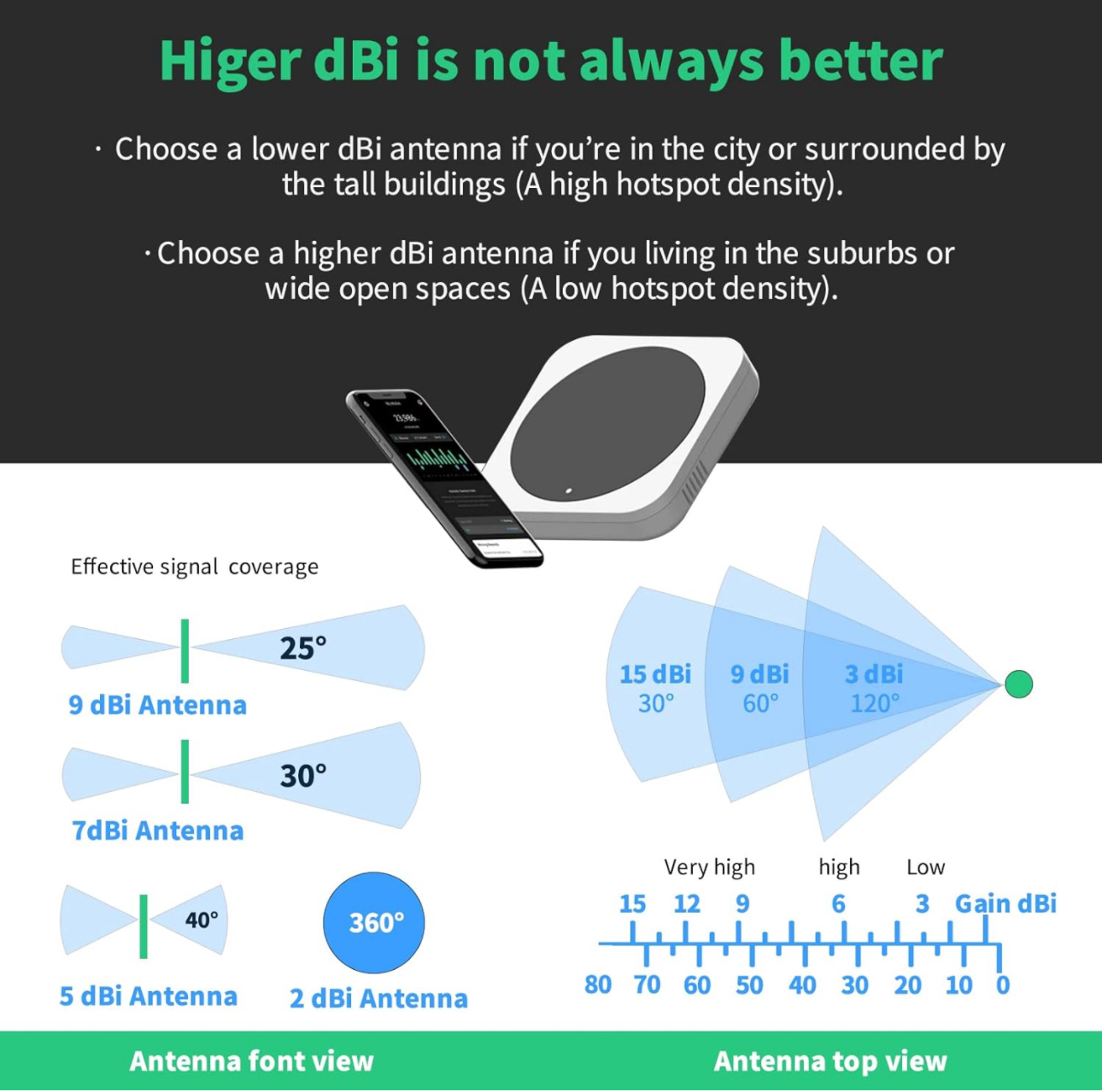Why Higher Gain Antennas Are Not Always Ideal for Fixed Meshtastic Nodes
When setting up a fixed Meshtastic node, it’s tempting to assume that a higher gain antenna will automatically provide better coverage. However, this isn’t always the case, especially in urban and suburban environments with uneven terrain, high noise, and variable user heights. Understanding the trade-offs associated with higher gain antennas can help you make a more informed decision and optimize your Meshtastic node coverage and performance.
The Basics: Gain and Coverage
Antenna gain, measured in dBi, indicates how well the antenna can direct radio frequency (RF) energy in a particular direction. Higher gain antennas can transmit signals further in specific directions but come with trade-offs that may impact overall network performance. It’s important to note that the dB scale is not linear, rather it is logarithmic. This means that an increase of 3dBi in antenna gain effectively doubles the sensitivity or signal strength in the direction of the antenna’s main lobe. This means that a 3dBi increase results in approximately twice the power output or signal reception capability in that specific direction. This includes stronger reception of noise that can interfere or prevent reception of the intended signal.
Reduced Vertical Beam Width
Higher gain antennas have a narrower vertical beam width. This means that while they can transmit signals over longer distances horizontally, they have a more limited vertical coverage area. In an urban or suburban environment where users might be at different heights (e.g., in multi-story buildings), a narrow vertical beam can result in coverage gaps. This is particularly problematic in areas with uneven terrain, where a higher gain antenna might miss users at different elevations.
Increased Noise Floor
Another consideration is the noise floor, which is the level of background RF noise in the environment. Meshtastic operates using the LoRa protocol around 915MHz in the unlicensed ISM band. While LoRa and Meshtastic’s implementation of LoRa are resilient, there are many other devices operating in that band. These include other devices for utility usage collection (such as gas and electric meters), cordless phones, and other private party and government services. Higher gain antennas are more sensitive to this noise because they amplify all signals within their range, including unwanted noise. This can degrade the quality of the communication link, especially in densely populated urban areas where RF noise levels are typically higher.
Mobility Coverage: Less is Often More
For fixed Meshtastic nodes aimed at providing mobility coverage in urban and suburban environments, antennas with a gain of 3-5dBi are often ideal. These antennas offer a balanced approach, providing sufficient coverage without the drawbacks of higher gain antennas. They maintain a broader vertical beam width, ensuring better coverage for users at different heights and over uneven terrain.
Rural and Super Rural Areas
In contrast, rural areas with flat terrain or locations outside the primary coverage area may benefit from higher gain antennas (above 6dBi). Here, the primary challenge is often the distance, and the trade-offs associated with higher gain antennas (such as reduced vertical beam width and increased noise floor) are less impactful due to lower user density and RF noise levels. Higher gain antennas can extend coverage to join primary coverage areas, enhancing the overall network.
Case Study: Mt Lemmon Node
A practical example of this principle in action is the Meshtastic node on Mt Lemmon. This node, equipped with a 6dBi antenna, has demonstrated impressive coverage beyond 50 miles, including reliable indoor coverage within Tucson. This success highlights that while higher gain antennas have their place, they are not always necessary for optimal performance in every scenario.
Conclusion
Choosing the right antenna for your fixed Meshtastic node requires a balance between gain and coverage requirements. While higher gain antennas might seem attractive due to their ability to transmit signals over longer distances, they come with significant trade-offs that can reduce overall network performance, especially in urban and suburban environments. For these settings, a 3-5dBi antenna often provides the best balance of coverage and performance, ensuring reliable connectivity for users at varying heights and across uneven terrain.
